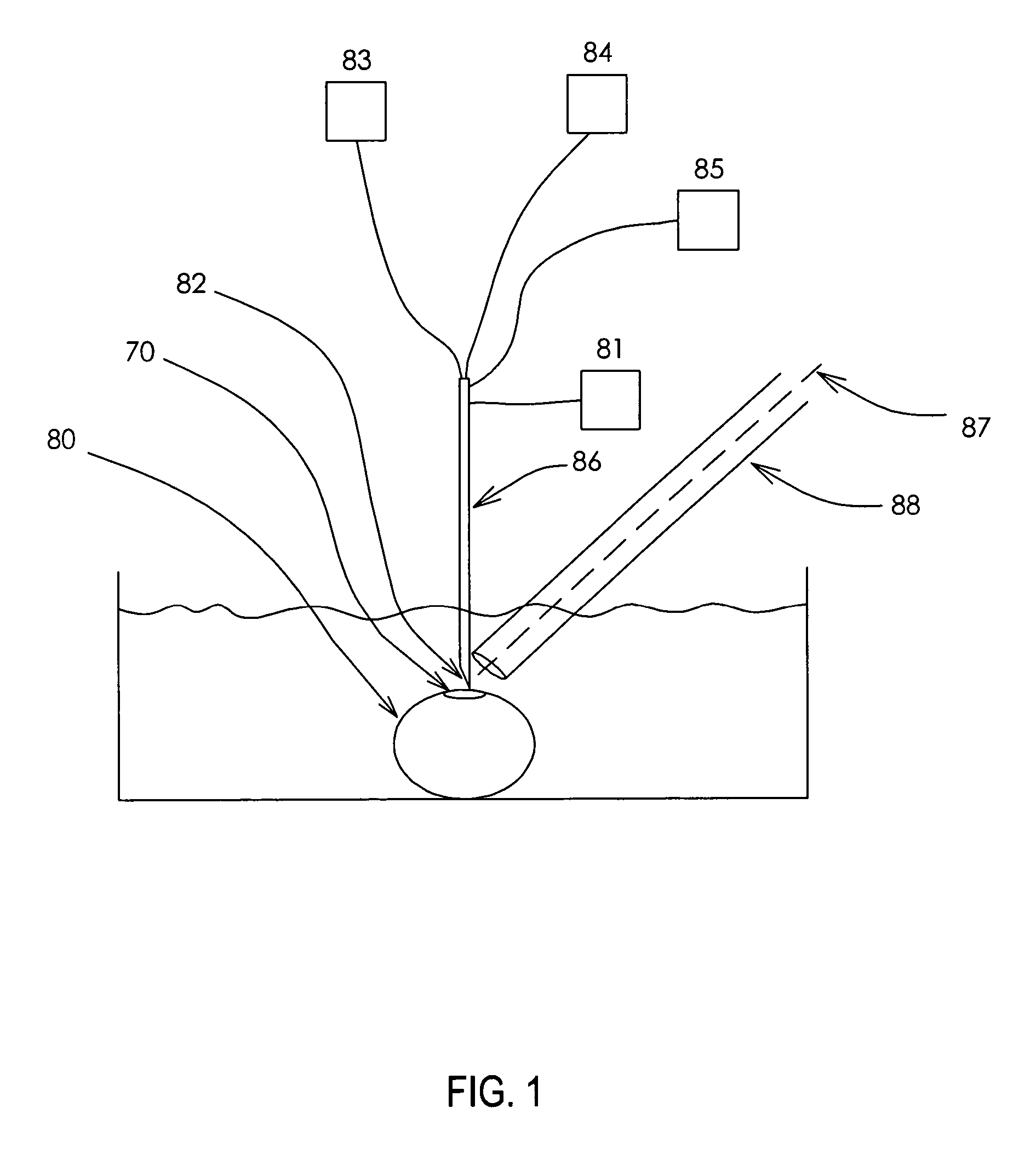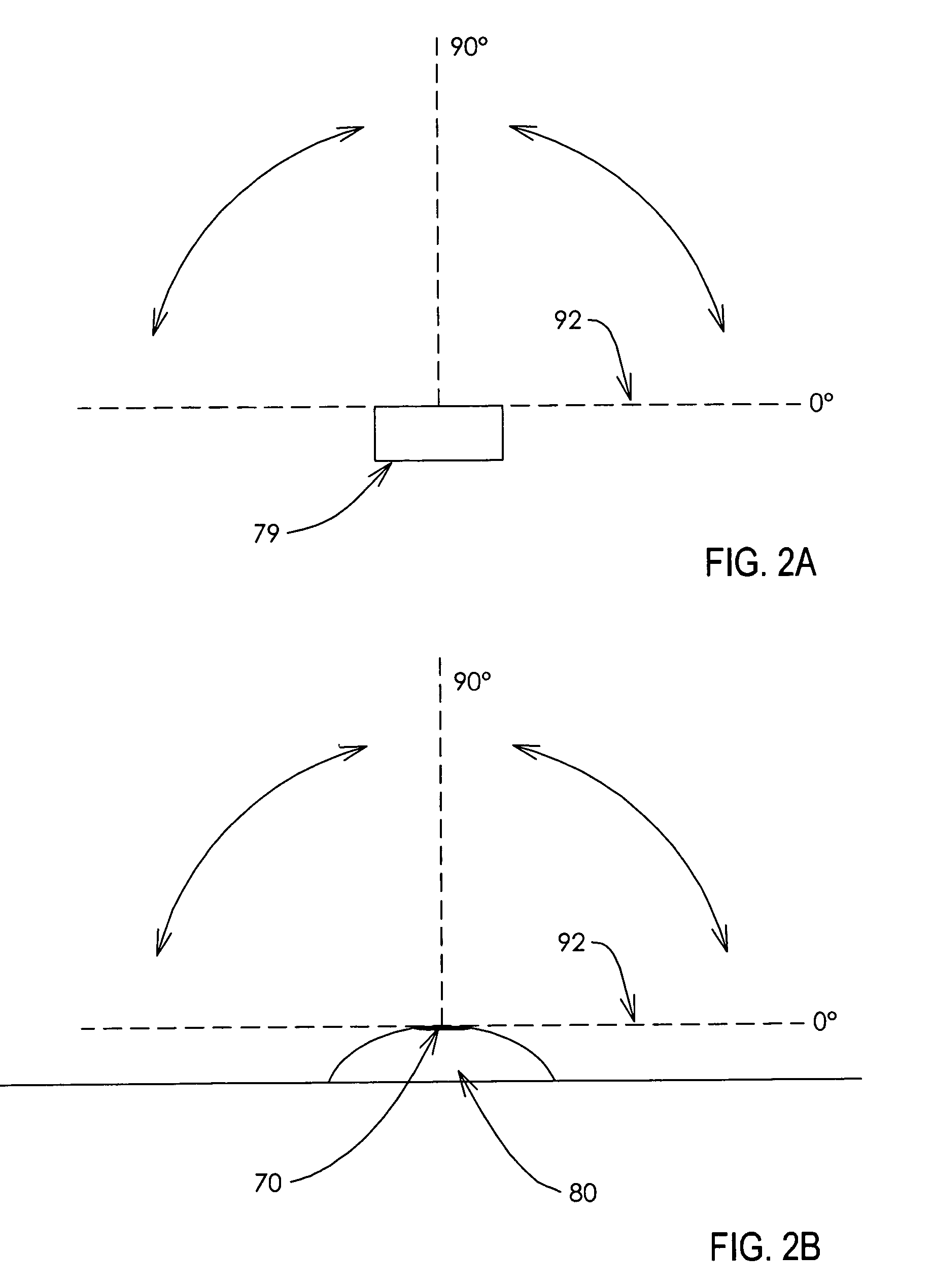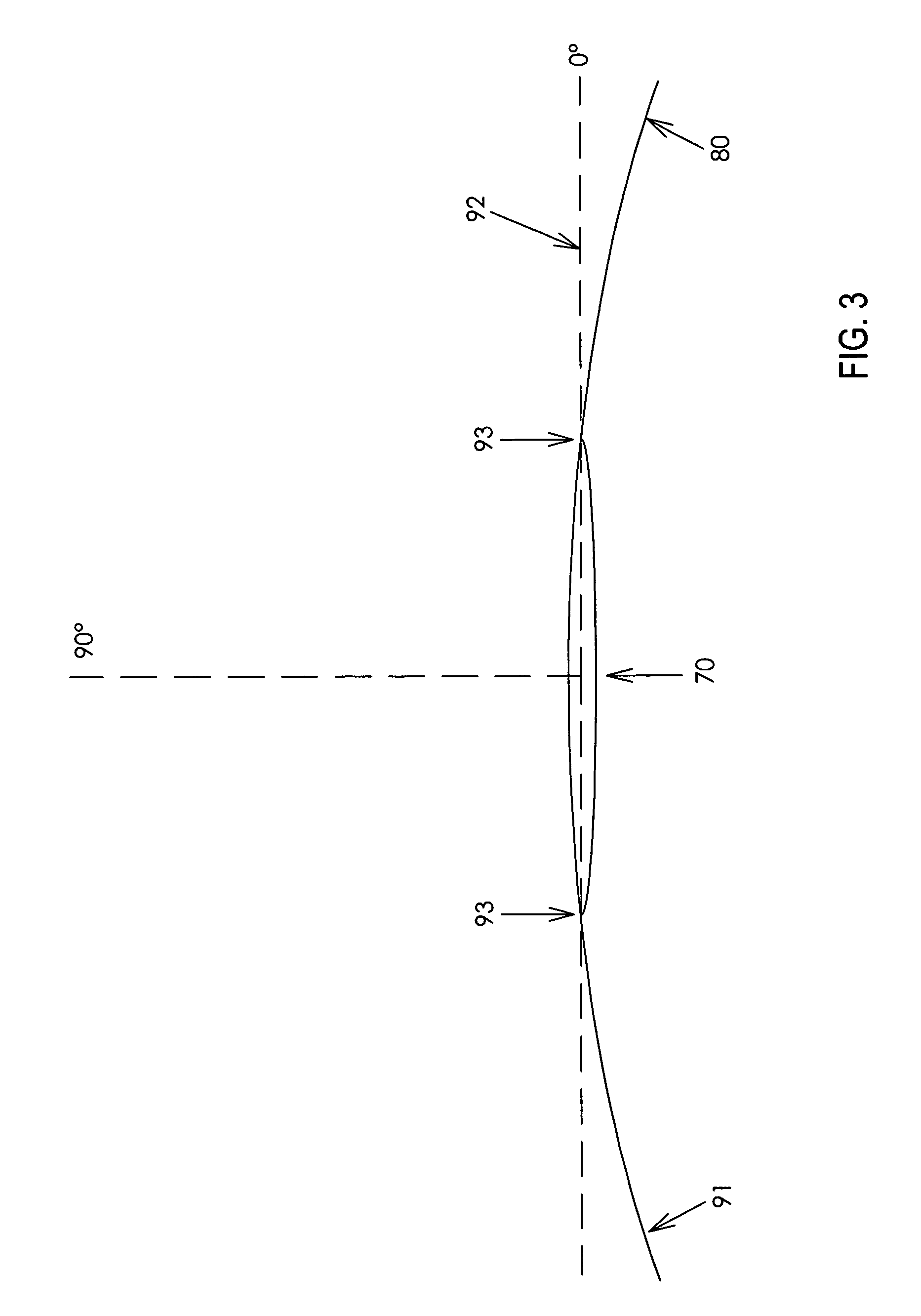Microinjection devices and methods of use
a micro-injection device and micro-injection technology, applied in the field of micro-injection devices and methods of use, can solve the problems of retrovirus use, inefficiency and time-consuming, and limitations of transgene size,
- Summary
- Abstract
- Description
- Claims
- Application Information
AI Technical Summary
Benefits of technology
Problems solved by technology
Method used
Image
Examples
example 1
Production of Transgenic Hens by Microinjection of an Ovomucoid Promoter-Bacterial Artificial Chromosome Expression Vector Transgene
[0121]BAC clones OMC24-IRES-LC and OCM24-IRES-HC were used to produce transgenic chickens by microinjection. A detailed description of these BACs is disclosed in U.S. patent application Ser. No. 11 / 047,184, filed Jan. 31, 2005 now allowed, the disclosure of which is incorporated in its entirety herein by reference. Briefly, each BAC includes a 70 kb chicken ovomucoid gene region with a coding sequence for either a heavy chain (HC) or light chain (LC) of a particular human IgG1 antibody. The HC and LC sequences are under the translational control of an internal ribosome entry site (IRES) which is inserted in the 5′ UTR of the ovomucoid gene region.
[0122]The BACs were linearized by enzymatic restriction digest. The digested DNA was phenol / CHCl3 extracted, ethanol precipitated, suspended in 0.25 M KCl and diluted to a working concentration of approximately...
example 2
Production of Antibody by Transgenic Hens
[0127]Transgenic chicks produced as described in Example 1 were grown to maturity. Eggs were collected from the hens and egg white material was assayed for the IgG1 using sandwich ELISA.
[0128]The eggs were cracked and opened and the whole yolk portion was discarded. Both the thick and thin egg white portions were kept. 1 ml of egg white was measured and added to a plastic Stomacher 80 bag. A volume of egg white buffer (5% 1M Tris-HCl pH 9 and 2.4% NaCl) equal to two times the volume of egg white was added to the egg white. The egg white-buffer mixture was paddle homogenized in the Stomacher 80 at normal speed for one minute. The sample was allowed to stand overnight and homogenation was repeated. A 1 ml sample of the mixture was used for testing.
[0129]A Costar flat 96-well plate was coated with 100 ul of C Goat-anti-Human kappa at a concentration of 5 μg / ml in PBS. The plate was incubated at 37° C. for two hours and then washed. 200 μl of 5% ...
example 3
Production of Transchromosomic Chickens Using Satellite DNA-Based Artificial Chromosomes
[0131]Satellite DNA-based artificial chromosomes (ACEs, as described in Lindenbaum et al Nucleic Acids Res (2004) vol 32 no. 21 e172) were isolated by a dual laser high-speed flow cytometer as described previously (de Jong, G, et al. Cytometry 35: 129-133, 1999).
[0132]The flow-sorted chromosomes were pelleted by centrifugation of a 750 μl sample containing approximately 106 chromosomes at 2500×g for 30 min at 4° C. The supernatant, except the bottom 30 microliters (μl) containing the chromosomes, was removed resulting in a concentration of about 7000 to 11,500 chromosomes per μl of injection buffer (Monteith, et al. Methods Mol Biol 240: 227-242, 2004). Depending on the number of chromosomes to be injected, 25-100 nanoliters (nl) of injection buffer was injected per embryo.
[0133]Embryos for this study were collected from 24-36 week-old hens from commercial White Leghorn variety of G. gallus. Embr...
PUM
| Property | Measurement | Unit |
|---|---|---|
| angle | aaaaa | aaaaa |
| angle | aaaaa | aaaaa |
| angle | aaaaa | aaaaa |
Abstract
Description
Claims
Application Information
 Login to View More
Login to View More - R&D
- Intellectual Property
- Life Sciences
- Materials
- Tech Scout
- Unparalleled Data Quality
- Higher Quality Content
- 60% Fewer Hallucinations
Browse by: Latest US Patents, China's latest patents, Technical Efficacy Thesaurus, Application Domain, Technology Topic, Popular Technical Reports.
© 2025 PatSnap. All rights reserved.Legal|Privacy policy|Modern Slavery Act Transparency Statement|Sitemap|About US| Contact US: help@patsnap.com



